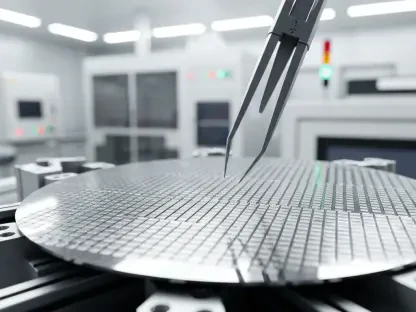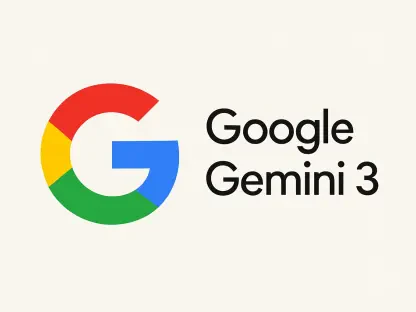In the ever-evolving landscape of smartphones, two new contenders from Google have captured significant attention: the Pixel 9 and the Pixel 9a. With a substantial $300 price difference separating them, the primary question for consumers is which model provides better value. Both devices promise impressive specifications, but discerning which option provides optimal features and performance for its cost requires a closer look.
Design and Build
The design and build quality of the Pixel 9 and Pixel 9a reveal the first point of distinction. While both models embrace a modern aesthetic, the materials used set them apart in terms of feel and durability. The Pixel 9a follows the design language of its premium sibling, featuring a flat display, right-angled edges, and a minimalistic rear camera layout. However, Google has opted for a plastic back on the Pixel 9a, making it lighter but slightly less durable and premium compared to the Pixel 9.
Conversely, the Pixel 9 underscores its premium status with its use of Gorilla Glass Victus 2 on both the front and back. This material choice not only enhances the device’s durability but also adds a touch of luxury to its appearance. Both models, however, maintain IP68 water and dust resistance, ensuring they remain resilient under similar conditions.
In terms of physical dimensions, the Pixel 9a is slightly larger yet lighter, weighing in at 186 grams compared to the Pixel 9’s 198 grams. The variation in color options also adds to the personal appeal of each model. Both smartphones are available in Obsidian (black), Porcelain (white), and Peony (pink), but differ with device-exclusive hues: Pixel 9 offers Wintergreen (green), while Pixel 9a introduces Iris (lavender). These design nuances give consumers aesthetic flexibility while confirming the Pixel 9’s superiority in materials.
Display
Turning to display features, both the Pixel 9a and Pixel 9 present formidable credentials, making this part of the comparison more balanced. Each device boasts a 6.3-inch Actua OLED panel with a resolution of 2424 x 1080 pixels, ensuring clear, vibrant visual experiences. They also share a 120Hz refresh rate, supporting smooth scrolling and responsiveness crucial for a seamless user experience.
Brightness capabilities further equalize their standing; both displays achieve up to 1,800 nits in HDR mode and peak at 2,700 nits. Such performance assures visibility and clarity even in bright outdoor scenarios. Both devices are equipped with an in-display fingerprint sensor, which enhances convenience and security.
Given these shared specifications, users should expect equivalent visual fidelity and performance from either model. The alignment in display features suggests that consumers do not need to allocate additional funds for a superior visual experience when choosing between these two options.
Performance and Software
Performance and software emerge as another critical comparison point between the Pixel 9 and Pixel 9a, highlighting noticeable distinctions. At the heart of both models lies the Google Tensor G4 processor, known for its AI-enhanced capabilities rather than sheer processing power. This processor ensures reliable performance across different tasks, from day-to-day activities to more demanding applications.
However, the Pixel 9 enjoys a distinct advantage with its 12GB of RAM compared to the Pixel 9a’s 8GB. The increased RAM capacity supports enhanced multitasking and the seamless operation of memory-intensive applications. This difference in RAM capabilities could be decisive for users who require robust multitasking performance.
Connectivity options also favor the more premium Pixel 9, which supports mmWave 5G and Wi-Fi 7. These features guarantee faster network speeds and more reliable connectivity. On the other hand, the Pixel 9a supports sub-6GHz and C-Band 5G along with Wi-Fi 6E. While still competent, these connectivity features are a step down from those offered by Pixel 9.
Both smartphones run on Android 15 and benefit from Google’s promise of seven years of software updates. This commitment ensures that both models remain current and functional until at least 2032. Hence, consumers get a long-lasting and future-proof device with either choice. Those who prioritize higher RAM and superior connectivity will find the Pixel 9 better suited to their needs, while both models assure high performance due to the Tensor G4 chip.
Cameras
Camera capabilities constitute another significant area of divergence between the Pixel 9 and Pixel 9a, catering to different photography needs. The Pixel 9a provides a commendable 48MP main camera equipped with an f/1.7 aperture, optical image stabilization (OIS), and dual-pixel autofocus, making it capable in various lighting conditions.
Yet, the Pixel 9 excels in this segment with its 50MP main sensor, which captures more light and performs better in low-light scenarios. Additionally, the Pixel 9 features a superior 48MP ultrawide camera, offering enhanced quality for landscape and group photos compared to the 13MP ultrawide sensor on the Pixel 9a.
Differences extend to the front cameras as well. The Pixel 9 hosts a 10.5MP sensor, while the Pixel 9a includes a 13MP sensor. Both models support a Super Res Zoom of up to 8x and 4K video recording at 60fps, although the Pixel 9 adds a cinematic 4K 24fps mode.
For consumers who prioritize high-quality photography and advanced camera options, the extra investment in Pixel 9 proves worthwhile. Nonetheless, the Pixel 9a’s camera capabilities are still highly proficient for regular use.
Battery and Charging
Battery life and charging present notable differences worthy of consideration. The Pixel 9a boasts a larger battery capacity at 5,100mAh, the biggest in any Pixel phone so far. This larger battery suggests better endurance, making the Pixel 9a more suitable for prolonged usage on a single charge.
Charging capabilities, however, tilt the balance toward the Pixel 9. The Pixel 9 supports faster wired charging at 27W compared to 23W in the Pixel 9a. Moreover, wireless charging capabilities are significantly better in the Pixel 9, boasting 15W versus 7.5W in Pixel 9a.
For users who depend on extensive battery life, the Pixel 9a emerges as the superior choice. Conversely, those who prioritize quicker charging times, especially through wireless options, may find the Pixel 9 more appealing.
Pricing and Value
The pricing and perceived value analysis reveals why the Pixel 9a is dubbed the budget-friendly option. Priced at $499 for 128GB storage, the Pixel 9a offers approximately 90% of the Pixel 9’s experience without a premium cost. This characteristic makes the Pixel 9a highly attractive to cost-conscious consumers seeking powerful performance within a reasonable budget.
The Pixel 9, priced at $799 for the same storage, justifies its higher price through premium build quality, advanced camera technology, and superior connectivity features. Users willing to invest more for tangible enhancements in these areas will benefit from the Pixel 9’s superior specifications.
Final Insights
In the rapidly changing world of smartphones, Google’s latest releases, the Pixel 9 and Pixel 9a, have generated substantial buzz. These two models stand out, especially given the noteworthy $300 price gap between them. For many consumers, the pressing question is which device offers the best bang for their buck. Sure, both the Pixel 9 and Pixel 9a come with promising specifications, but determining which one delivers superior features and performance for the cost necessitates a closer examination.
The Pixel 9, as the higher-end model, might boast more advanced technology and additional features, potentially justifying its higher price tag. This could include better camera capabilities, enhanced processing power, or even exclusive software features designed to appeal to tech enthusiasts. However, the Pixel 9a, being more budget-friendly, aims to offer a high-quality experience without breaking the bank. It may still deliver solid performance, good battery life, and a commendable user experience, making it an attractive option for those who don’t need all the high-end extras.
Therefore, the decision-making process hinges on what you prioritize in a smartphone. For those seeking top-tier performance and the latest features, the Pixel 9 might be worth the investment. However, if affordability without significant compromises is more important, the Pixel 9a could offer the best value. Thus, consumers are encouraged to weigh their specific needs and budgets when choosing between these two compelling options.









